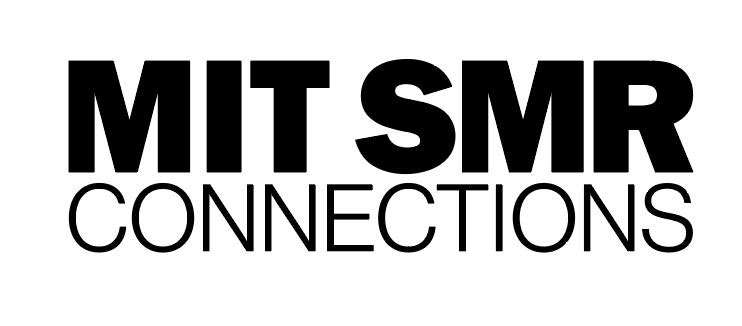Designer Bailey Hunter’s adept maneuvers are charting a roadmap to the future of fashion.
Given the international underpinnings of her business, it might be expected that Bailey Hunter’s clothing brand, Tigra Tigra, would be among the most vulnerable to the ever-shifting landscape. After all, when the supply chain is so compromised that New Yorkers can’t even find cream cheese for their bagels (really), it would seem quite the challenge for a small U.S.-based company to source rare silken and hand-embroidered textiles from Asia.
Since its founding in 2016, Hunter’s garment studio has partnered directly with artisan-owned businesses in Gujarat, India to produce its vibrant collections, using low-impact and traditional techniques, some dating back to the Ottoman Empire. So, when the pandemic hit and travel was curtailed, the entrepreneur, who regularly journeyed to the region for creative inspiration and to check in on production, had to pivot. “Just getting materials, like raw fiber, was problematic,” says Hunter. “We use a lot of hemp handloom that is grown and cultivated in different states in India, and we had supply chain issues.”
But from necessity sprang invention. “When you have boundless possibilities, it can sort of be a paradox, making it difficult to set a direction,” says the entrepreneur. She decided to focus on small runs (the limited-edition positioning ended up sparking heavy demand from her customers) and re-evaluated her own inventory, repurposing materials left over from previous seasons and reimagining them into new styles. “If we had some extra mashroo [a material featuring silk on the outer warp and cotton on the inner weft], or some specific colors remaining that wouldn’t be enough for full run, we created one-off pieces,” she says. “The pandemic really pushed me to be as resourceful as possible.” Hunter’s pivot happily aligned with Tigra Tigra’s commitment to sustainability. As she points out, “By using every bit of scrap and fabric we had in stock, instead of relying on fresh materials, we minimized any waste.”
Not a cakewalk, but sweet rewards
Despite her nimble mindset, it wasn’t a cakewalk. “Obviously, the circumstances caused a lot of collective anxiety, in terms of everyone’s health and the uncertainty of what was going to happen,” says the designer. Hunter normally travels to Asia at least four times a year during her development phase, which entails everything from sourcing new trims and perfecting fits to observing new techniques her weavers, dyers, and embroiderers have devised. While she designs from her Los Angeles studio, she supervises a project manager and eight full-time workers in India who handle everything from the craftsmanship itself tomanaging production on the ground. “Going at least a few times a year has been crucial,” she says. “The human element is really important, just to be connected to the product and the people making the pieces—it’s all about collaboration.”
Despite the challenges, Tigra Tigra’s organizational structure landed Hunter in a better position than many larger clothing brands. While heritage companies were playing catch-up and learning how to integrate various teleconferencing platforms, Hunter was one step ahead. “We’ve always communicated through message apps and video calls, so much of the business is built on technology,” she says. And the fact that her brand was already e-commerce-centric (Tigra Tigra sells via its own website and through other e-commerce partners instead of brick-and-mortar) meant it wasn’t as exposed. “We’re predominantly direct-to-consumer, so we kind of write our own narrative,” Hunter says. “We’re fortunately able to reach our clients without relying on wholesale accounts.”
While the delivery schedules of many companies in various sectors were disrupted—and not in the trendiest sense of the word—by India’s tight COVID restrictions (at times, citizens were not permitted to leave their residences), Tigra Tigra was able to keep filling orders. “All the people that do our weaving and embroidery, and two of the main dyers, already worked from home,” notes Hunter. “Being able to keep working meant they could take care of their families—it’s a more financially sustainable model.” Their local processes also meant that employees didn’t have to set out into the world, with all of the attendant health risks. “I’m proud that we were able to keep everyone employed,” says Hunter.
Scalability and sustainability
Small-scale and sustainable methods also helped her company weather the crisis. By not being beholden to mass manufacturing techniques, Tigra Tigra wasn’t caught up in factory delays and closures. “Sustainability was really part of the solution,” says Bailey. “We’re very low-impact,” she says. “We make things on handlooms that don’t require electricity.” In an unstable landscape, traditional, craft-centric production methods gave her an edge over the big players.
Hunter was also able to remain true to the luxe eclecticism that has made her brand a favorite of fashion insiders. While the track suit may indeed be the power suit of the work-from-home age, Hunter’s creations exist in a world all their own. Her pieces are far from traditional business attire, but infinitely more unique than the athleisure that’s arguably oversaturating the industry. So, when office attendance dropped dramatically during the pandemic, her pieces—from hand-dyed gradient silk dresses to silk brocade cargo trousers—remained relevant. “So many people have a hybrid schedule and are still working from home, so there is a push to the casual,” says the designer. “But there’s still a market for quality.”
In Hunter’s view, if there is a silver lining to the pandemic, it’s that Big Fashion received a much-needed wake-up call. “It became clear how fragile and how dependent it is on creating these massive collections and mass-producing these garments, and just how narrow a margin many operate on,” she says. While she’s cognizant that the fashion industry is, on the whole, a significant contributor to climate change (“The average American creates about 70 pounds of textile waste per year,” she notes), she sees the narrative slowly shifting to “Buy Better.” “Countries like India and China pollute and destroy their own environments to meet Western demand for bottom-dollar prices,” she says. “We want to change what people demand, but also hold big corporations accountable, so they make changes that aren’t so destructive to the planet.”
Hope for reform
While there is a huge amount of work to be done, Bailey sees hope for reform. She notes how mass brands are starting to buy into the concept of a circular economy, even if they are doing things as simple as encouraging customers to bring in their old clothing to be dropped off for recycling and eventually repurposed into new products. But bigger shifts are essential. “Large-scale technology is one of the most important areas to focus on,” she says. “We have to think: How can we repurpose all this waste? How can we get smarter and more efficient and produce in a way that isn’t so exploitative?” Given its green production style and small-batch focus, Tigra Tigra has been an outlier since its inception.
While the road ahead for retailers of all stripes remains bumpy, as vaccinations in lesser-developed countries continue to lag and new strains fuel new worries, Hunter is already getting back to running her enterprise with a post-pandemic mindset. “With travel starting to be a little less restrictive, we’re getting back into a nice groove,” says the founder, who boarded a plane to India for the first time in over two years this January. Creatively, she’s looking forward to once again having the sights and scenes of her travels directly inform her work—and to seeing her partners in person. “In good times, we’ll continue to create remotely, but working with my team is the main reason I love what I do,” says Hunter. “Beyond the collections, it’s the people I’ve built this brand with over many years who keep Tigra Tigra so exciting. One of my favorite parts is when we are just hanging out and talking about life and making food together, just catching up.”
Nevertheless, flexibility will always be a part of Tigra Tigra’s business model. If travel restrictions or unforeseen circumstances of any kind once again postpone her inspiration-searching journeys, Hunter can count on virtual collaboration to pull her through the toughest times. With technology at her fingertips that keeps her connected to her process and her teammates, she’s ahead of the game. “I feel very blessed that my business is able to be done in a hybrid-remote manner. It’s part of our DNA as a brand to have strong communication in person and digitally,” says the entrepreneur. “We’re looking to the future.”





